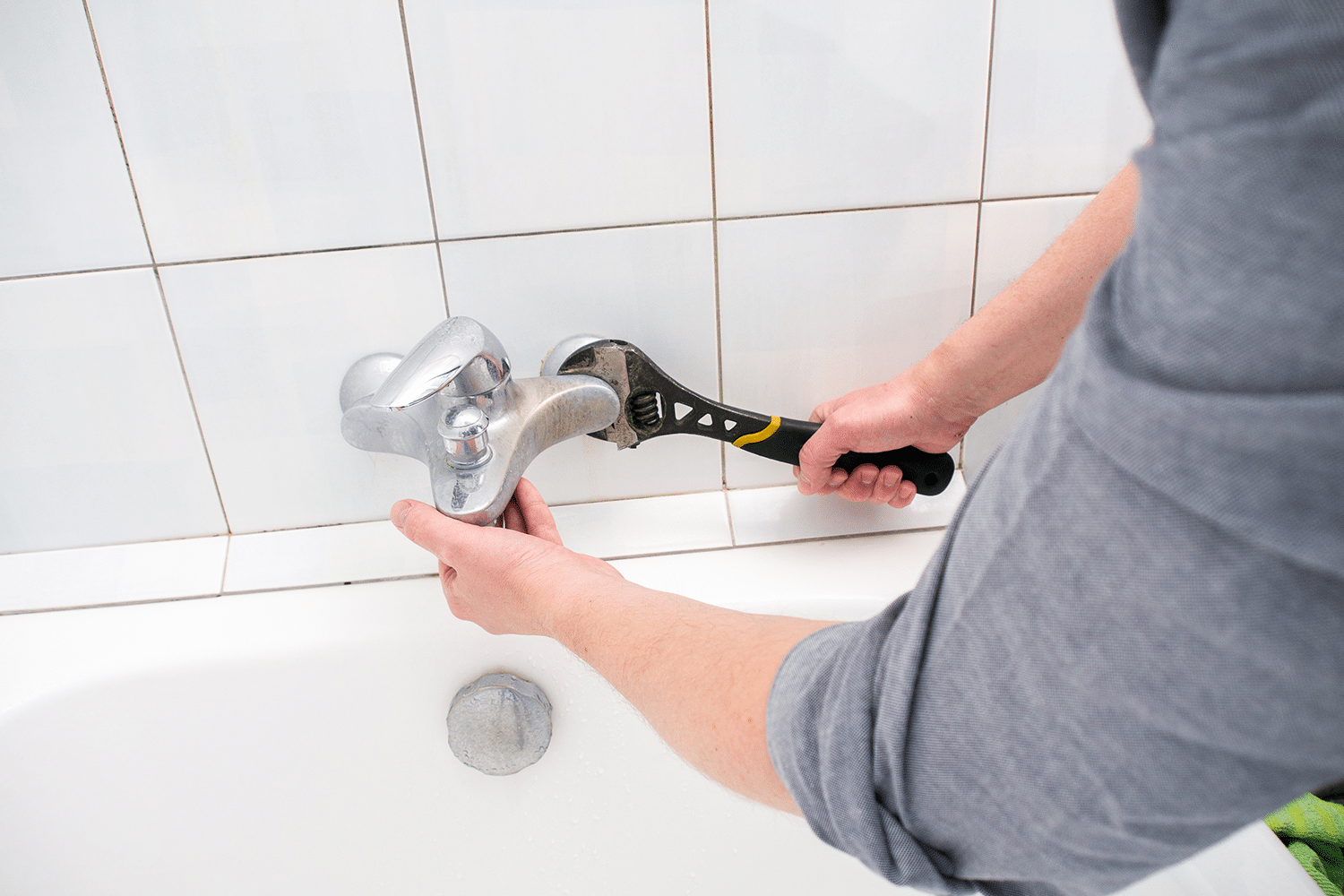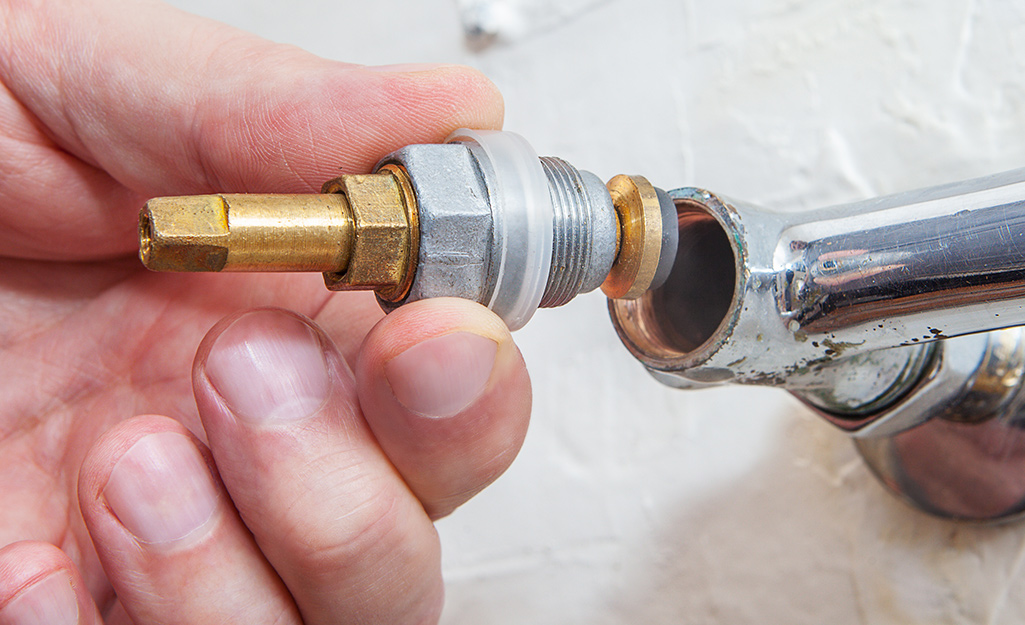Which It's Required to Deal with a Malfunctioning Faucet
Which It's Required to Deal with a Malfunctioning Faucet
Blog Article
We have come across the article on Leaky Faucets: Why They Happen & What to Do About Them listed below on the net and believe it made perfect sense to talk about it with you on this page.

Trickling taps might feel like a minor inconvenience, yet their effect surpasses just the inconvenience of the audio. From drainage to incurring unneeded monetary prices and wellness dangers, overlooking a leaking tap can bring about various effects. In this post, we'll explore why it's vital to resolve this common house concern promptly and properly.
Wastefulness of Water
Environmental Influence
Trickling taps add substantially to water wastefulness. According to the Environmental Protection Agency (EPA), a single faucet trickling at one drip per second can waste more than 3,000 gallons of water annually. This not only pressures water resources but additionally affects ecosystems and wild animals depending on them.
Step-by-Step Guide to Repairing a Dripping Tap
Tools Required
Prior to trying to take care of a dripping faucet, collect the essential tools, consisting of a flexible wrench, screwdrivers, replacement components (such as washing machines or cartridges), and plumber's tape.
Usual Tap Issues and Their Solutions
Determine the kind of faucet and the certain problem creating the drip. Usual issues consist of worn-out washers, corroded shutoff seats, or defective O-rings. Refer to producer directions or on the internet tutorials for step-by-step assistance on fixings.
Financial Prices
Boosted Water Bills
Past the ecological effect, trickling faucets can blow up water costs substantially. The built up wastefulness with time equates into greater utility expenditures, which might have been prevented with prompt repair work.
Possible Building Damage
Additionally, extended leaking can lead to harm to fixtures and surfaces bordering the faucet. Water accumulation can create discoloration, deterioration, and also architectural issues if left neglected, resulting in added repair work prices.
Health Problems
Mold and Mildew Growth
The constant presence of dampness from a dripping tap creates an excellent environment for mold and mildew growth. These fungis not only compromise indoor air high quality however additionally position wellness risks, especially for people with respiratory conditions or allergic reactions.
Waterborne Illness
Stagnant water in trickling taps can end up being a breeding place for bacteria and other pathogens, enhancing the danger of waterborne conditions. Pollutants such as Legionella microorganisms thrive in stagnant water, possibly causing serious ailments when ingested or inhaled.
DIY vs. Expert Repair
Benefits and drawbacks of DIY Fixing
While some might try to deal with a dripping tap themselves, DIY repairs feature their own collection of difficulties. Without proper expertise and tools, do it yourself attempts can intensify the problem or lead to incomplete repairs, lengthening the trouble.
Advantages of Employing a Specialist Plumber
Hiring a specialist plumber makes sure that the underlying root cause of the leaking faucet is addressed effectively. Plumbing professionals possess the knowledge and equipment to detect and repair tap issues effectively, saving time and decreasing the danger of further damage.
Environmental Responsibility
Individual Payment to Preservation
Taking duty for repairing trickling taps lines up with wider initiatives toward water preservation and environmental sustainability. Every person's activities collectively make a significant impact on protecting precious resources.
Sustainable Living Practices
By focusing on prompt repair work and adopting water-saving routines, individuals add to lasting living practices that profit both existing and future generations.
Preventive Measures
Normal Maintenance Tips
To stop dripping faucets, do routine upkeep such as cleansing aerators, inspecting for leakages, and changing worn-out components without delay. Additionally, think about setting up water-saving devices or updating to more effective fixtures.
Importance of Prompt Repairs
Resolving dripping faucets as soon as they're noticed stops additional water wastefulness and potential damage, inevitably saving both water and cash in the future.
Effect On Residential Or Commercial Property Value
Understanding of Well-Maintained Building
Keeping a residential property in good condition, consisting of dealing with upkeep issues like dripping taps, improves its perceived worth and value among potential customers or lessees.
Influence on Resale Worth
Residences with well-kept plumbing components, consisting of taps, command higher resale worths in the real estate market. Attending to dripping taps can add to a positive impact throughout residential or commercial property inspections and settlements.
Final thought
Dealing with a trickling faucet exceeds simple comfort; it's a crucial action towards saving water, minimizing economic expenses, and safeguarding health and building. Whether via DIY repair work or expert aid, taking action to deal with leaking taps is a small yet impactful means to advertise accountable stewardship of sources and contribute to a healthier, more sustainable future.
How to Fix a Dripping or Leaky Faucet
A leaking faucet is one of the most common problems that homeowners encounter, but it being commonplace doesn’t make it any less annoying. The constant drip drip drip of a leaking bathtub faucet, showerhead, or sink tap can disturb your home’s serenity. Left neglected, a dripping faucet can also result in higher water bills and discoloration or mold growth in your sink or plumbing fixtures.
Fortunately, you don’t have to be a trained plumber to know how to stop a dripping faucet. With some basic tools, replacement parts, and a little patience, leaky faucet repair is a breeze. In this article, we’ll explain what causes dripping faucets and how you can fix them.
What Causes a Leaking Faucet?
Kitchen and bathroom faucets come in all manner of designs, but most involve some combination of valves, O-rings, seals, and washers. The O-ring is usually the weakest link, but any one of these pieces can wear down over time. Heat, moisture, temperature fluctuations, minerals, mold, and movement can contribute to warping and corrosion, breaking the watertight seal. This just comes with the territory of being a homeowner. Everything is always subject to wear and tear, and some component parts of your appliances and fixtures need to be replaced on occasion. At least replacement O-rings are cheap!
More rarely, dripping faucets can be a symptom of excessively high water pressure. Were this the case in your home, you would probably notice that the leak is not isolated to one faucet. Water pressure issues are harder to resolve on your own. We recommend contacting a professional plumber if you suspect your water pressure is too high.
How to Fix a Dripping Faucet
Pipe wrench or monkey wrench Allen wrench set Screwdrivers Old towel or rag Shut off the water.
Before you do anything, you need to turn off the water to keep from drenching your kitchen or bathroom. You should find a valve under the sink and against the wall. Once you’ve turned this valve, try turning the faucet on to confirm that the water source has been cut off.
If you can’t locate your local valve for the faucet you’re working on, you can always shut off the water to the house at the main valve. Of course, this will prohibit anyone from using the sinks, showers, or toilets while you’re working on the faucet that’s giving you trouble.
Plug or block the drain.
You’ll be disassembling the faucet and removing some small bits of hardware. Plug the drain with a stopper or rag to avoid the possibility of a small screw falling into your P-trap.
Take apart the faucet assembly.
There are several varieties of kitchen and bathroom faucets, each with its own manner of assembly. For detailed instructions on how to disassemble your faucet, you can refer to the fixture’s manual or contact the manufacturer. If you know whether you have a ball, disc, cartridge, or compression faucet, you can find detailed schematics online.
In general, you need to begin by removing the faucet handles. You might notice a small screw that you’ll need to remove with a screwdriver or Allen wrench. If you don’t see any visible securing hardware, it’s likely hidden under a decorative cap that can be unscrewed or popped off with flathead screwdriver.
Remove each piece methodically, consulting a schematic when necessary. Take notes or arrange the pieces in such a way to make it easier to correctly reassemble the faucet later.
Remove the cartridge.
Once you’ve removed the handles and securing hardware, you should be able to remove the valve cartridge or stem. Some cartridges will slide right out. Other faucet models will require you to loosen a nut with a pipe wrench before you can remove the valve stem.
Examine the exposed hardware.
With the cartridge or stem removed, inspect the component parts. Check the rubber O-rings for wear and tear. Also examine the seat washer for corrosion or other damage. These pieces are usually the responsible parties for a dripping faucet, but it’s worth inspecting the other component parts while you have the faucet disassembled.
Find replacement parts.
Once you’ve identified which faucet component has failed, find an identical replacement. Your local hardware store should have O-rings, seat washers, and other standard components in stock. If you have a luxury or uncommon faucet, you may have to contact the manufacturer for a replacement part.
It’s a good idea to take your old parts with you to the hardware store so you can compare them with the store’s inventory and be sure you’re purchasing the correct replacement.
Reassemble the faucet.
With your new parts in hand, reconstruct the faucet and handles. Don’t be tempted to overtighten screws or nuts. You might think this could create a better seal, but it can instead damage or bend a delicate part of the assembly and create a new problem for you.
Turn on the water and test the faucet.
The only thing left to do is test your work. Unplug the sink, turn the water back on, and try the faucet. Congratulate yourself on a job well done!
https://www.libertyhomeguard.com/how-to-fix-a-dripping-or-leaky-faucet/

I found that blog post about when doing research the web. Appreciated our content? Please quickly share it. Let another person check it out. We value reading our article about .
Report this page